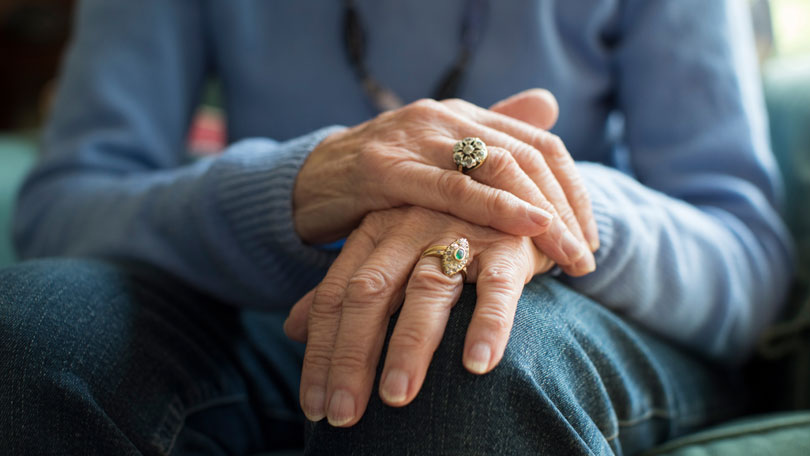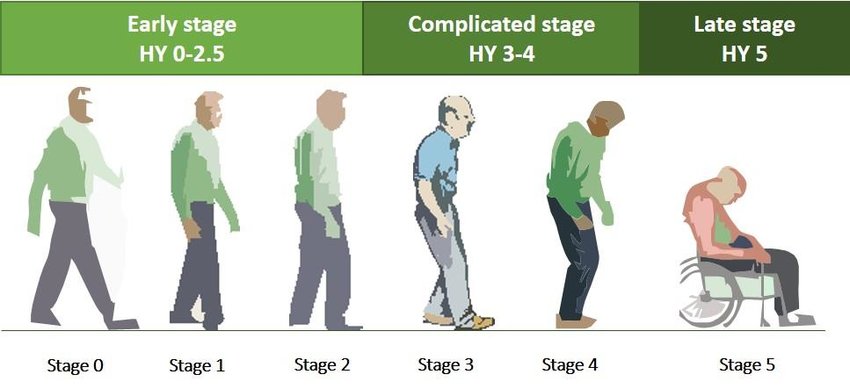Parkinson's Disease

Parkinson's Disease often originates in the form of tremors in one hand. Other symptoms include stiffness, slow painful movements and loss of balance.
What is Parkinson's Disease?
Parkinson's Disease is a disorder triggered in the central nervous system which affects movement, causing stiffness and tremors in the joints. It usually develops due to nerve cell damage caused in the brain that prompts dopamine levels to decrease, producing symptoms of the Parkinson's Disease.
Parkinson's Disease Symptoms
A patient might experience the following in Parkinson’s disease:
• Muscular Pain – Difficulty standing, stiff muscles, slow bodily movement, involuntarily movements etc.
• Sleep – Daytime sleepiness, early awakening
• Speech – soft speech, difficulty speaking
• Facial – Jaw Stiffness, Reduced facial expressions
• Urinary – the leaking of urine or dribbling of urine
• Nasal – loss of smell
• Cognitive – Amnesia, Dementia, difficulty in understanding and thinking
• Whole Body – Dizziness, poor balance, fatigue
Get in touch for free traetment plan >>
Stages of Parkinson’s Disease

• Stage One
During the initial stage, the patient experience mild symptoms of the diseases that do not interfere with their daily routine.
• Stage Two
Symptoms start to grow. Patients feel rigidity, tremors and other symptoms that disturb with the movements.
• Stage Three
It is the mid-stage of the disease, in which patient start experiencing slowness in movement and loss in balance.
• Stage Four
At this stage, symptoms have gotten severe and are preventing the patient from going back to his/her routine. Some patient might require a walker to function in this stage.
• Stage Five
Most advanced and aggressive stage of Parkinson’s disease that makes it impossible for the patients to walk or even stand. The patient needs a wheelchair or has to be bedridden, he/she is entirely on 360-degree nurse care.
Rating Scales
Doctors use rating scales for allowing patients to understand the progression of their disease.
UPDRS (Unified Parkinson’s Disease Rating Scale)
UPDRS is used as a comprehensive tool nowadays for accounting the non-motor symptoms in the patient, which include mental and physical function, social interactions and their overall mood.
Some extreme medical cases might require surgery, but for most cases, Parkinson’s disease is naturally cured with the help of medication and physiotherapy.
Get in touch for free traetment plan >>
Parkinson's Disease Treatment

Medications
Parkinson's Disease symptoms can be cured with regular doses of medications likes:
• Dopamine Promoter – helps in stimulating dopamine receptors inside the brain, making it attentive and active.
• Cognition-enhancing medications – helps in improving mental function by
• Anti-Tremor – help with unsteadiness, controlling tremors and shaking
• Antidepressant – helps in preventing and relieving depression and also for elevating mood.
Self-care (Physical Exercise and Balanced Diet)
Participating in yoga and aerobics every day for 20-30 minutes can help in improving the cardiovascular health of the patient's joints and muscles. If injured, the patient can indulge in exercises that avoid the injured muscles, working with other joints to sustain the physical strength and function of those regions.
Parkinson’s Disease Treatment Cost
The cost of consultation and evaluation of the Parkinson’s disease can cost around USD 500, with an extra amount of approximately USD 300 for the medication and rehabilitation.
Specialists involved in the treatment of Parkinson’s Disease
• Neurologist – helps in treating nervous system disorders.
• Physical Medicine – assist with restoring function and improving the quality of life for the patients who are suffering from physical disabilities.
• Speech Therapist – work with the patient to treat their speech problems caused due to the disease.
• PCP (Primary Care Provider) – diagnoses, prevents and treats diseases.
Get in touch for free traetment plan >>
FAQs
Can Parkinson’s disease kill the patient?
No, the patient cannot die because of Parkinson’s, he/she might die with the disease, but they won’t die because of the disease alone. There is no treatment to cure Parkinson’s Disease permanently, but its symptoms can be treated over time that can allow the patient to live a decent life. However, progressed symptoms of the diseases can lead to an incident that might cause death.
How long can a patient live after getting diagnosed with Parkinson’s disease?
Studies have found that Parkinson’s doesn’t have any effect on the life expectancy rate. In fact, most patients live over twenty years after getting diagnosed with it.
Explore Medmonks.com to learn more about various joint inflammations that can help in relieving the symptoms of ACL or any ligament damage condition.






